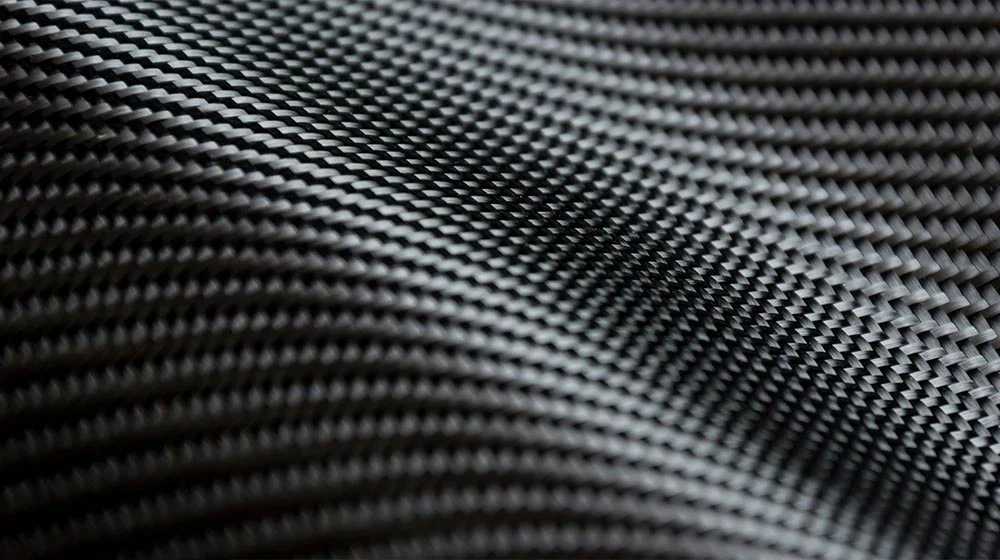Carbon fiber surface treatment: enhancing composite material performance

Carbon fiber is transformed from organic fiber through a series of heat treatment processes. Its carbon content exceeds 90%. It is an inorganic high-performance fiber and a new material with excellent mechanical properties. Carbon fiber not only inherits the inherent properties of carbon materials, but also combines the flexibility and processability of textile fibers. It is regarded as a new generation of reinforcing fiber and is used in many high-tech fields.
As a reinforcement, although it has a series of excellent performance characteristics, it is also accompanied by some challenges that must be faced. Due to the graphite-like structure, its surface is chemically inert, and it is difficult to infiltrate the resin and react chemically. It is difficult for the surface to combine with the resin, which in turn affects the strength of the composite material. Therefore, it is necessary to treat the surface of the carbon fiber, remove impurities on the surface of the carbon fiber, etch grooves on the surface of the carbon fiber or form micropores to increase the surface area, change the surface properties of the carbon fiber, increase the polar functional groups and surface activation on the surface of the carbon fiber, and then it is easier to infiltrate and react chemically, so that the interface of the composite material is more tightly connected and the strength is increased.
There are many methods for carbon fiber surface treatment, mainly including gas phase oxidation, liquid phase oxidation, electrochemical oxidation, coupling agent coating treatment, plasma treatment, grafting modification technology, etc. Among them, gas phase oxidation is currently the most commonly used method, and electrochemical oxidation is currently the only technology that can be operated online continuously during carbon fiber preparation, and the overall performance of carbon fiber reinforced resin-based composites treated with electrochemical oxidation is improved.
(1) Gas phase oxidation method
Gas phase oxidation methods include air oxidation, ozone oxidation, etc.
Air oxidation method is a method of placing carbon fiber in air with a certain relative humidity for high temperature treatment to oxidize the surface of carbon fiber by high temperature. After oxidation, the non-carbon elements on the surface of carbon fiber increase, which is beneficial to improve the wettability of the fiber and the resin bonding.
(2) Liquid phase oxidation method
Liquid phase oxidation method is to use concentrated nitric acid, concentrated sulfuric acid, hydrogen peroxide and other oxidants to contact carbon fiber for a long time to form carboxyl, hydroxyl and other groups on the fiber surface to enhance the bonding with the resin.
(3) Electrochemical oxidation method
Electrochemical oxidation is a method of treating the surface of carbon fiber by using the conductive properties of carbon fiber as the anode and graphite, copper plate or nickel plate as the cathode under the action of a DC electric field and using different acid, alkali and salt solutions as the electrolyte. The effect of surface electrochemical oxidation treatment is a composite process of layer-by-layer oxidation etching and functional group changes.
(4) Coupling agent coating treatment method
The coupling agent has a double functional group in its chemical structure, which enables it to react chemically with the fiber surface and the resin. Some of the functional groups can form chemical bonds with the fiber surface, while the other functional groups can react chemically with the resin. Through such chemical mediating action, the coupling agent can tightly connect the resin and the fiber surface, thereby enhancing the overall performance of the material. By using a coupling agent, not only can the strength and durability of the material be improved, but also its adhesion and resistance to chemical corrosion can be increased.
(5) Plasma treatment method
Plasma technology mainly uses discharge, high-frequency electromagnetic vibration, shock wave and high-energy radiation to generate plasma under inert gas or oxygen-containing gas conditions to treat the surface of the material.
(6) Grafting modification technology
By grafting the hexagonal nano-pyramids of silicon carbide, the interfacial adhesion between carbon fiber and resin can be significantly enhanced, which not only enhances the mechanical properties of carbon fiber composite materials, but also improves their friction performance. This technology has been applied to the manufacture of brake discs.
By selecting a suitable surface treatment method, the surface properties of carbon fiber can be improved, and its bonding with the matrix material can be enhanced, thereby improving the overall performance of the composite material.
